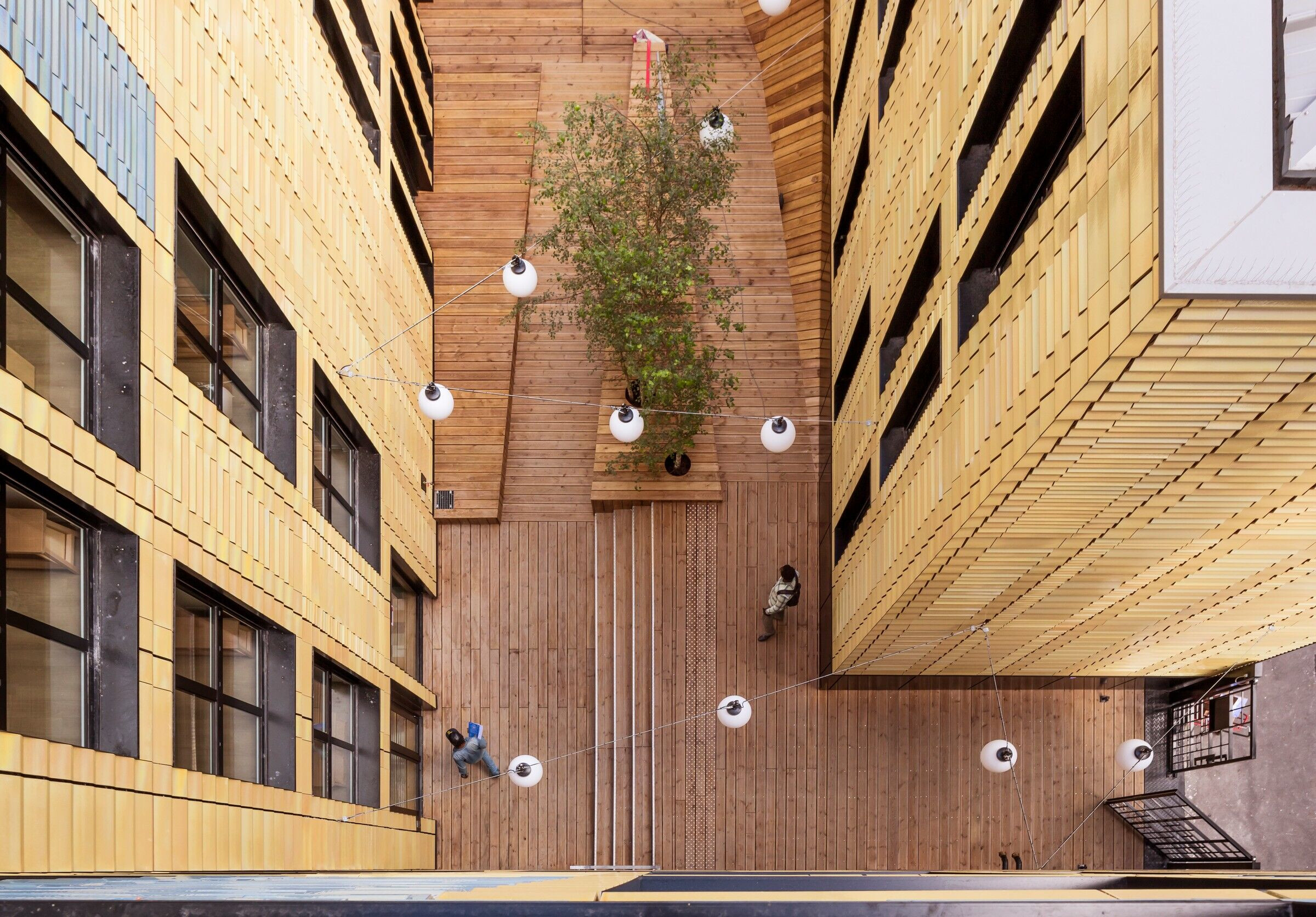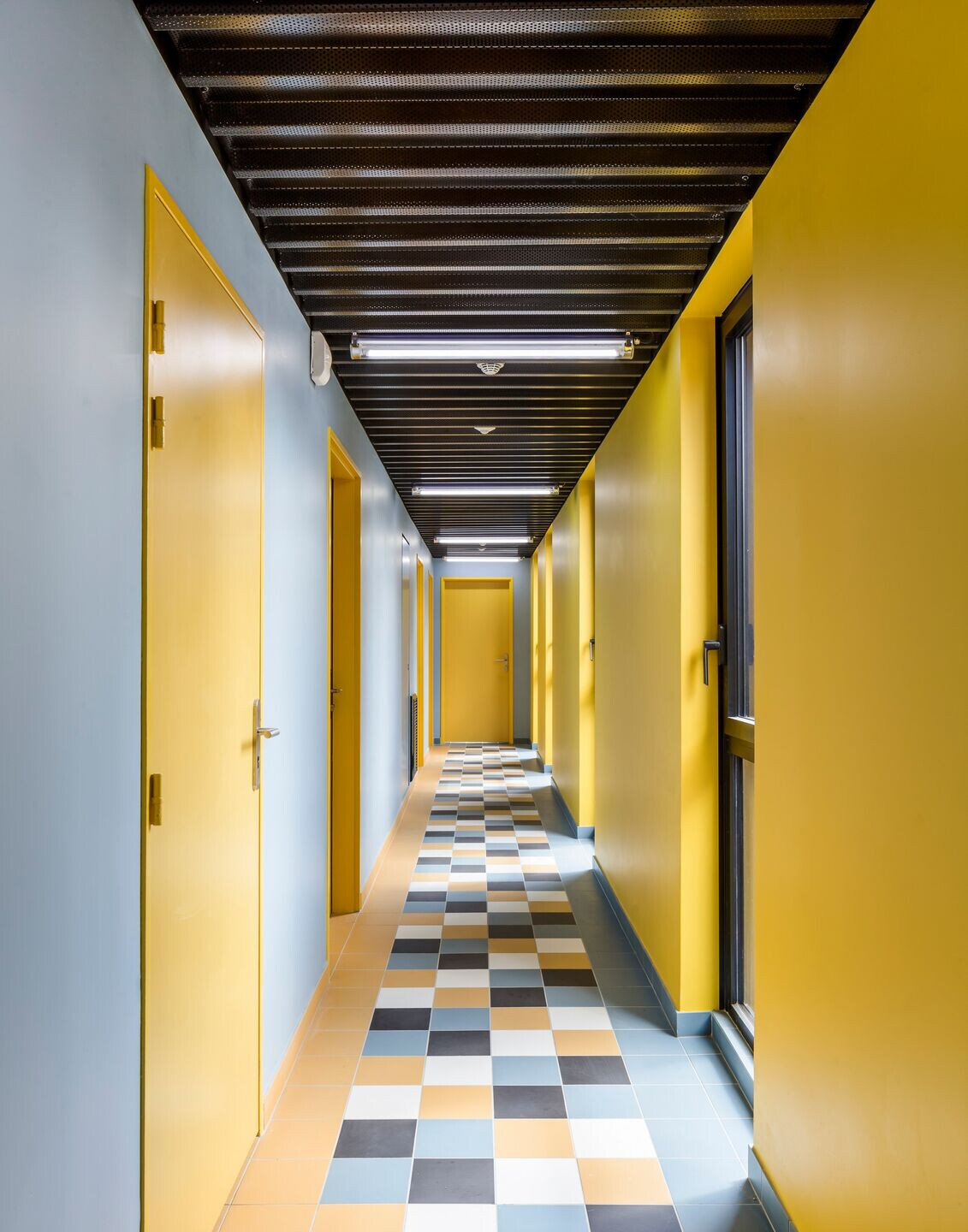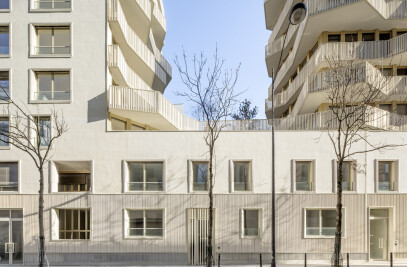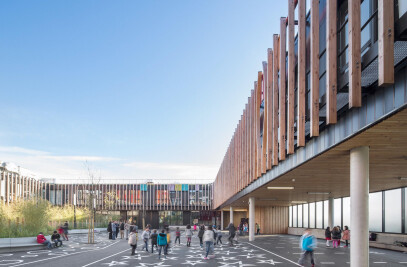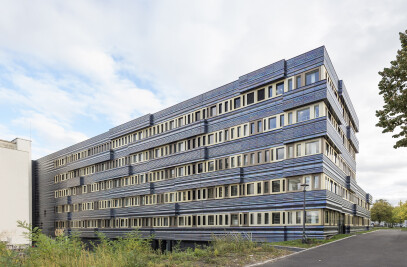A new urbanity
After an accurate analysis of differents constraints on this operation (deadlines and phasing, environmental ambitions, number of housings to be created ...), the project team proposed to preserve a part of the existing buildings : two parallelepiped buildings set back from the street , built in 1978 by Anthony Bechu architect. In the case of a restructuring- extension, the existing building template to be allows toThe condition of the building structure was compatible with the development of new types of housing. The condition of the building structure was compatible with the development of new types of housing. . Existing buildings are asbestos removal. The plot is densified. In the interior a shared courtyard is preserve, it dedicated to the residence. The urban approach of the building and its relation to the street are redefined.

The structural frame of building A is preserved, as well as its staircase and elevator shafts, brought into conformity; this building is totally partitioned, its facades are recomposed. Building B is demolished to give way to a new construction of 8 levels in the continuity of the building A redesigned and which extending until alignment on street side of Lorraine. Lower new constructions are located on the street alignment to form a continuous urban front on the entire perimeter of the site: a housing building R + 2 rue de Lorraine (building C) and the social restaurant on the ground floor of street of Crimée (building D). constructions neuves plus basses sont implantées à l’alignement des rues pour constituer un front urbain continu sur tout le pourtour du terrain : un bâtiment de logement en R+2 rue de Lorraine (bâtiment C) et le restaurant social en rez-de-chaussée rue de Crimée (bâtiment D).
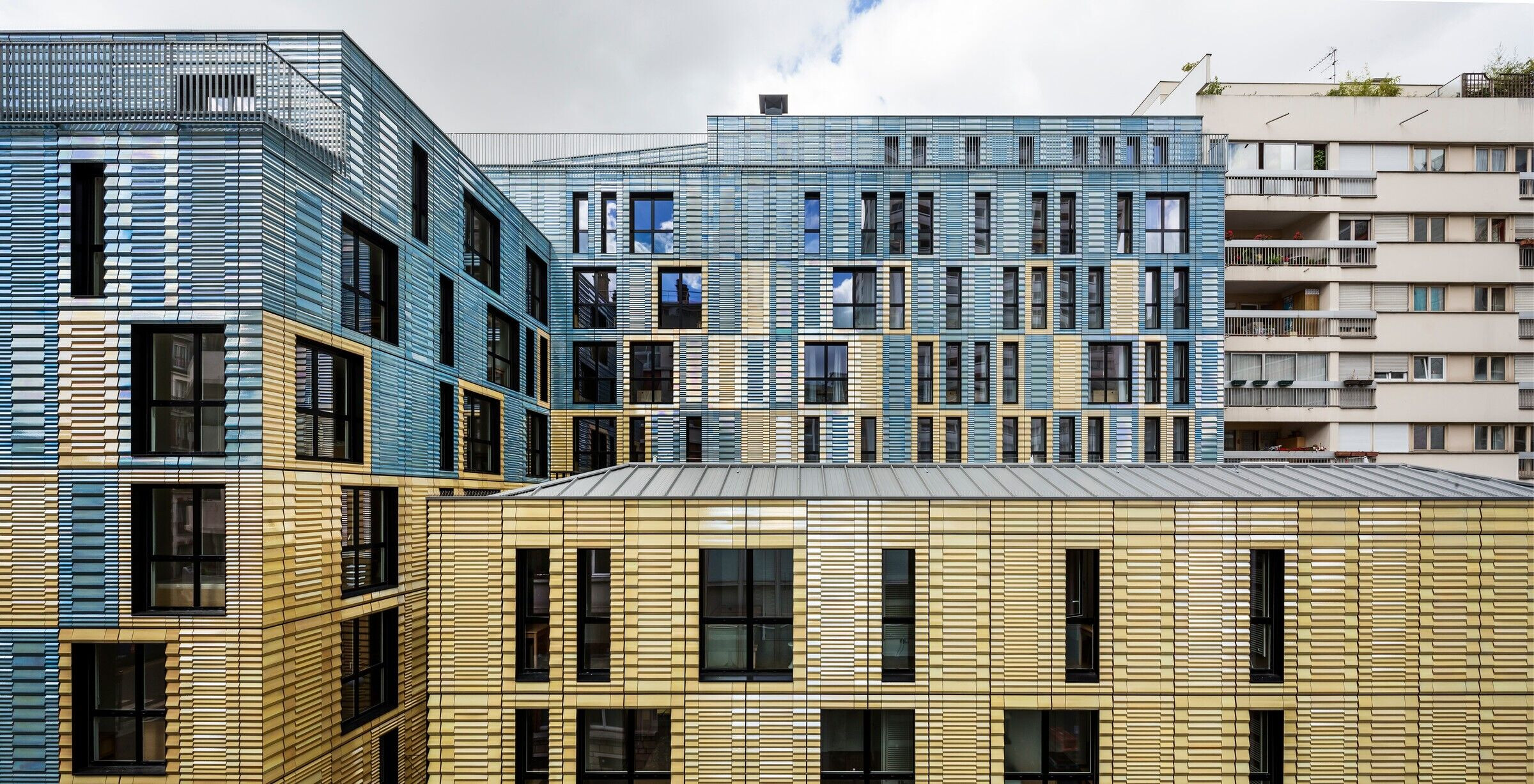
The facades
The cladding of the façades is made of iridescent enamelled terracotta. The composition of the facades is linked to the large number of windows (more than 350) of 173 studios. We wanted to to avoid the repetition effect from the street. A type framework was created in order to receive a window (single or double) or a full panel. Three extruded terracotta profiles were created for this operation with each of the different surface angles. With the development of iridescent enamel, these three profiles become diffraction surfaces of the light for the project. The wish was to create an "atmospheric" façade which reflects both the reflections of the sky and its surroundings.

Sociale résidence and social restaurant
The studio is composed by a block with bathroom, kitchen and a storage at the entrance,to be allowed to free the principal room in order to profit of light of sun. Studios made in light tones and raw materials have a certain sobriety facilitating appropriation. The furniture equipment was chosen in conjunction with the client. The floors of circulations are in porcelain stoneware like colored carpets. In groundfloor, the colored floors create an interior place. The ground floor common areas, laundry, meeting room, offices, living room are glazed and allow crossing views in the building. The social restaurant opens on the Crimée street and uses the checkerboard language of the project. The facade of the restaurant marked by large black metal frames generates a basement effect to the building, bearing a vegetal roof planted with tall grasses.

